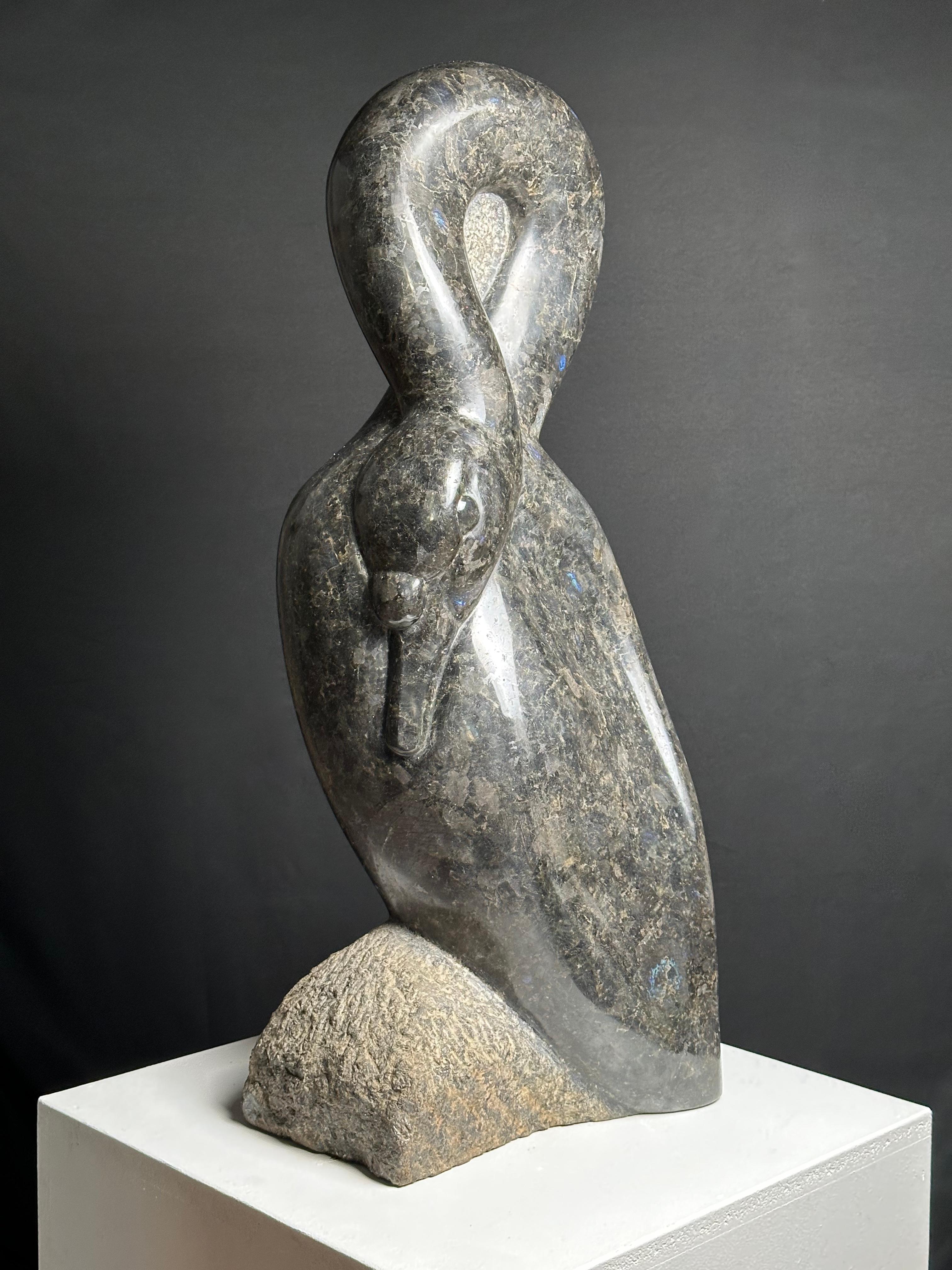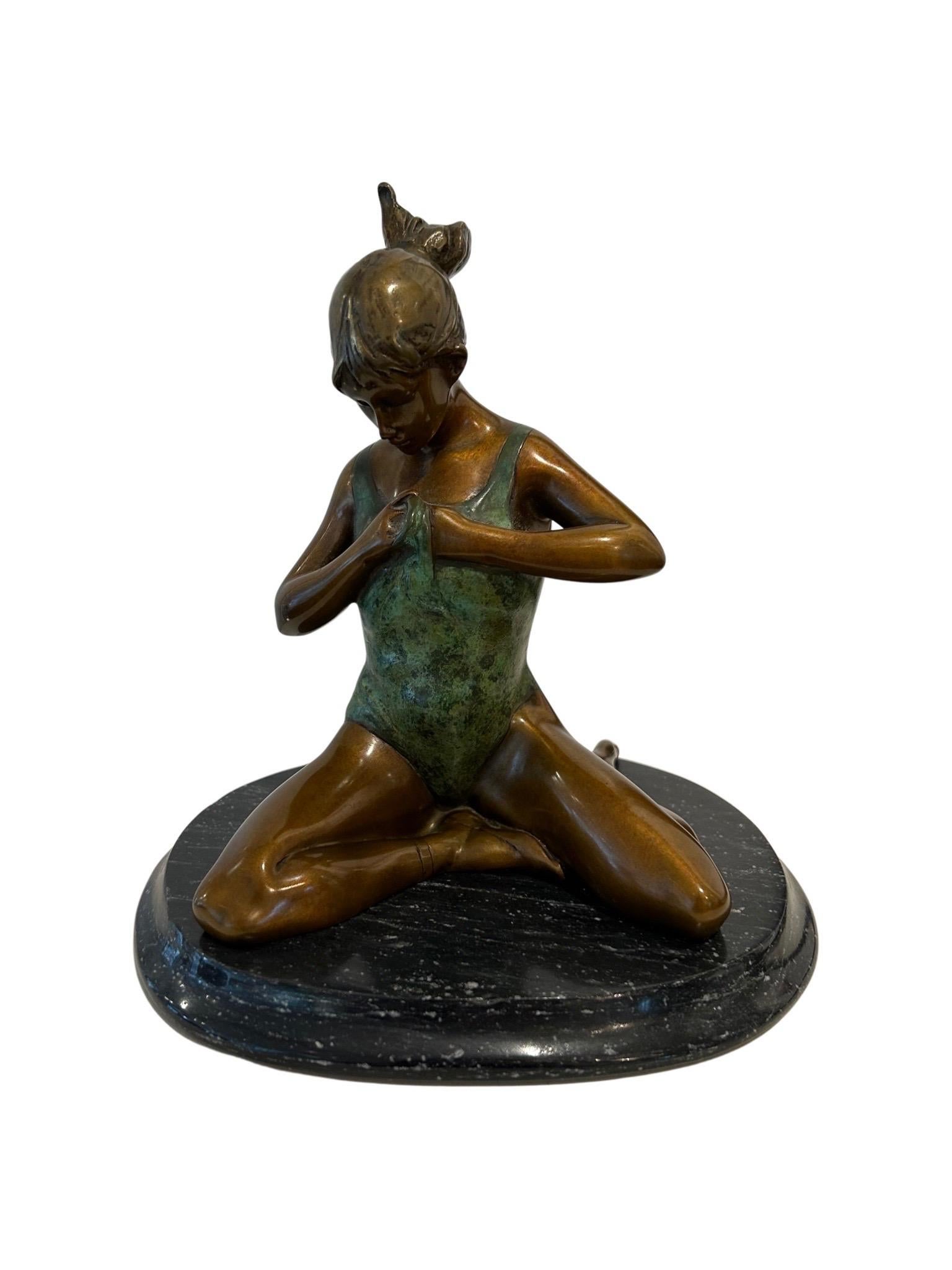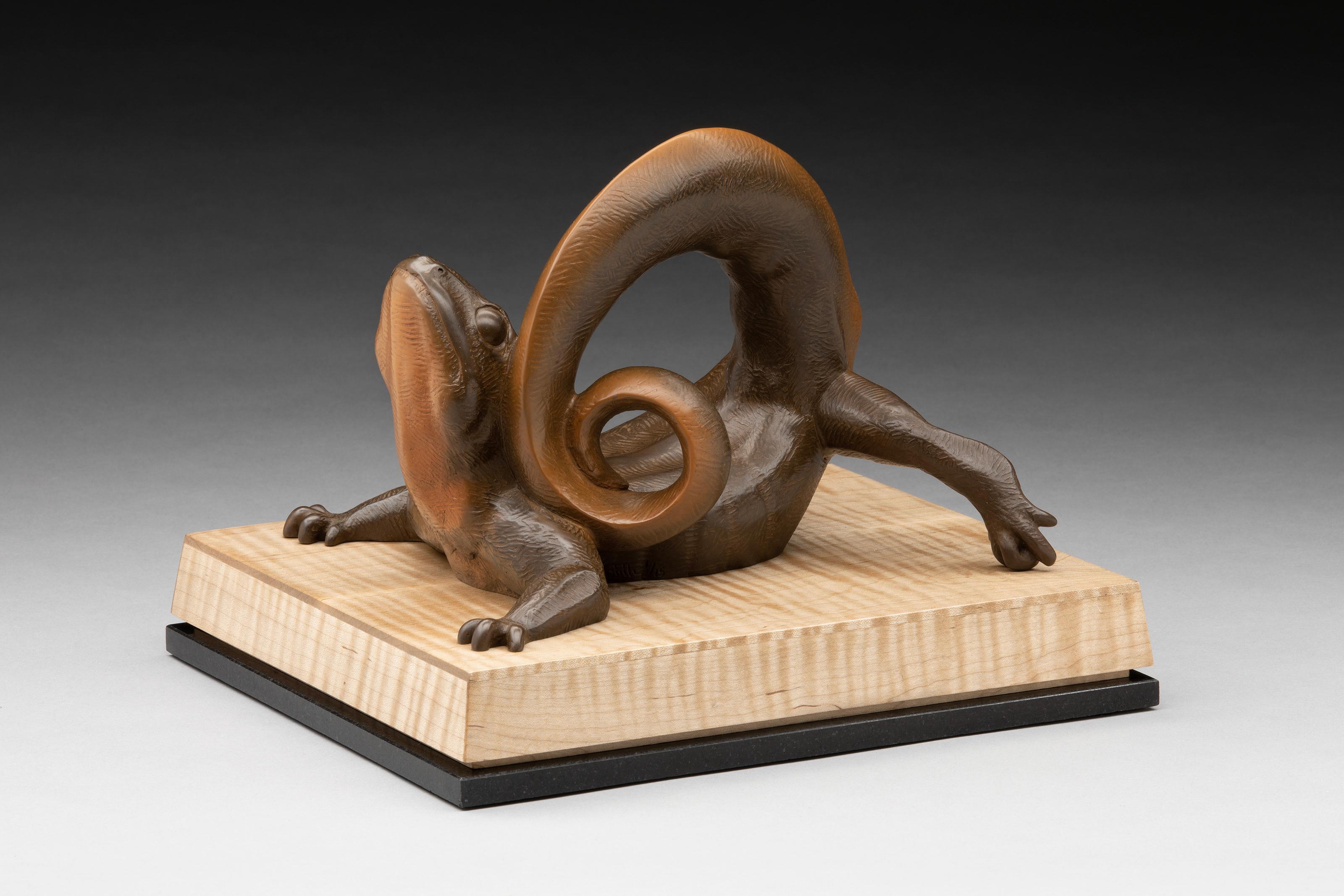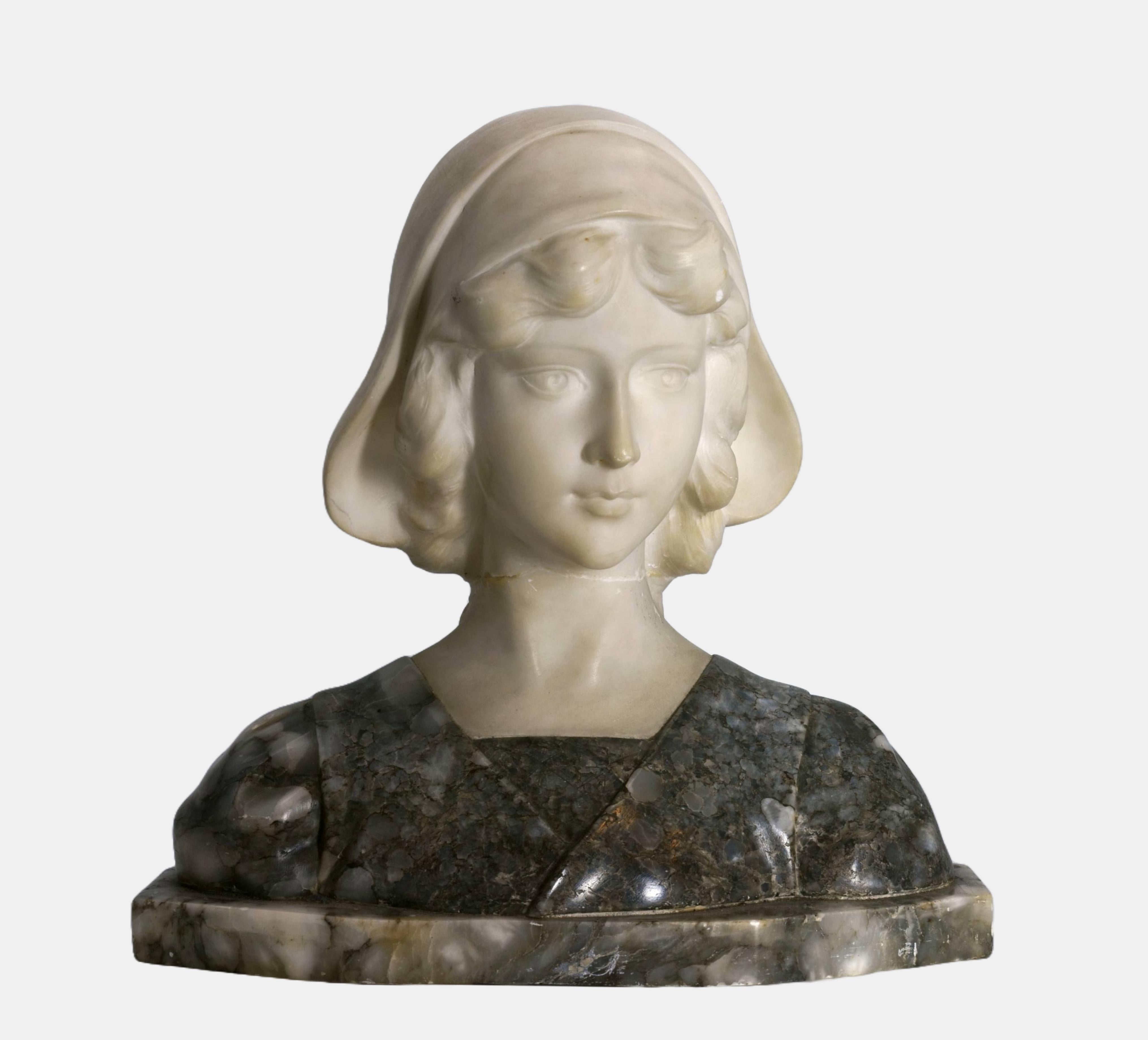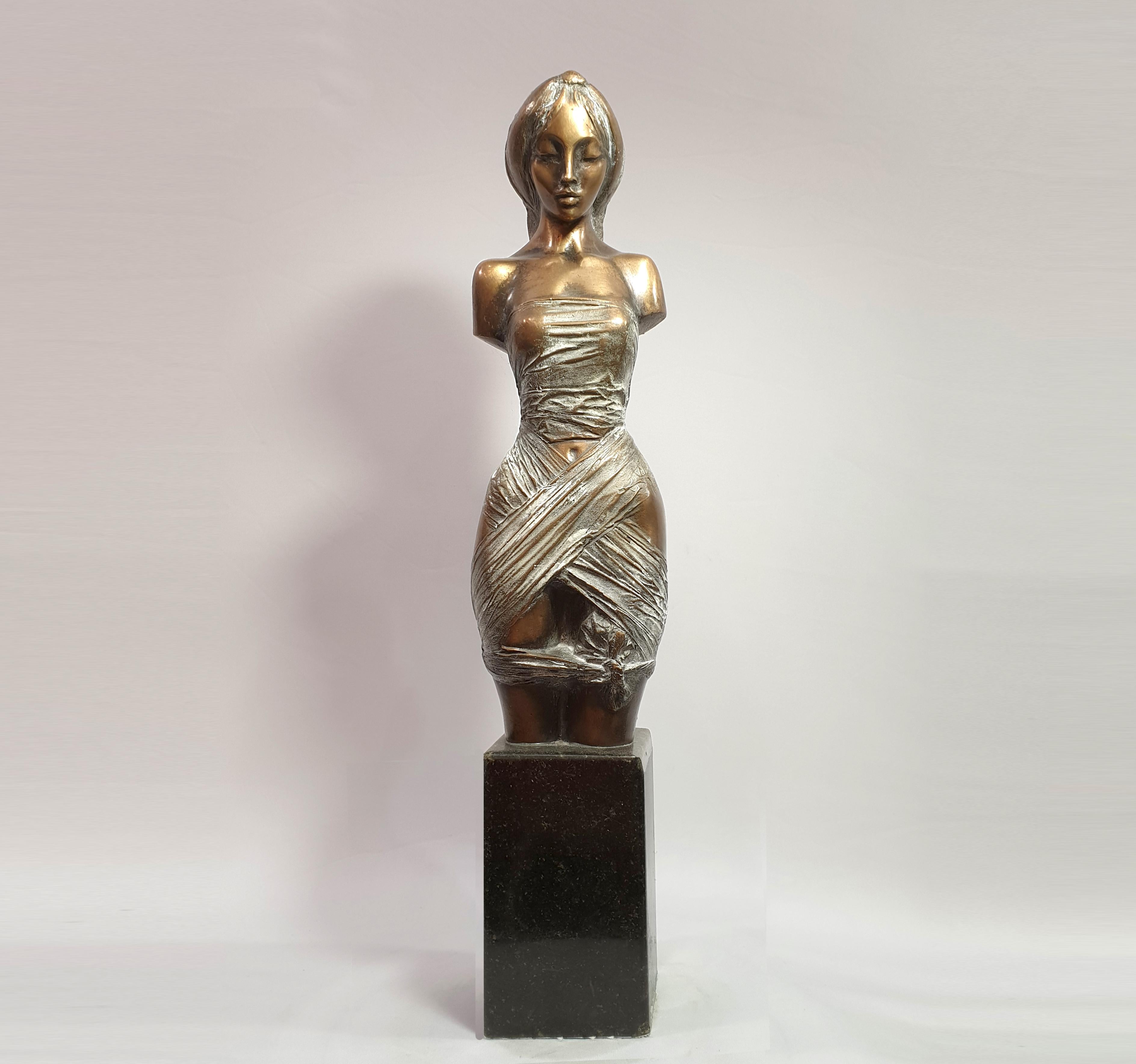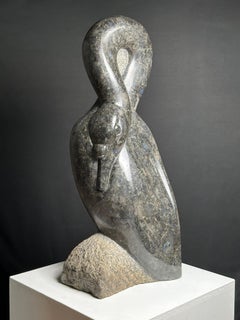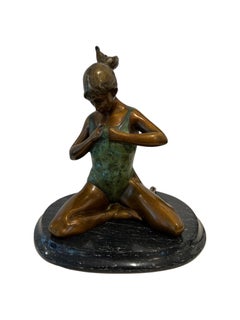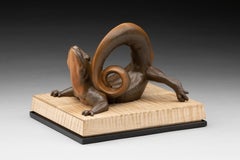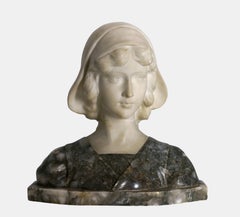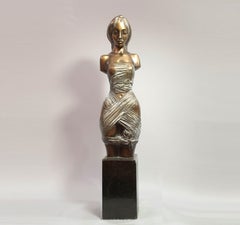Articoli simili a Sleeping Cat
Vuoi altre immagini o video?
Richiedi altre immagini o video al venditore
1 di 17
Mark MorrisonSleeping Catca. 1940
ca. 1940
Informazioni sull’articolo
Mark Morrison (1895-1964)
Sleeping Cat, ca. 1940
Carved Vermont granite
7.5" wide, 5" deep, height is 7"
Provenance: Estate of Mrs. Mark Morrison.
Born:
Kingfisher, OK
Education:
University of Missouri
John Flannagan, mentoring and private instruction ca. 1940
Art Students League with William Zorach and Jose de Creeft
Exhibited:
Sculpture Guild Annuals
Audubon Artists Annuals
National Academy of Design Annuals
Pennsylvania Academy Annuals
Metropolitan Museum Artists for Victory, 1942.
Newark Fine Arts Museum
Whitney Annuals
International Exhibition, Fairmount Park, Phila. 1950
Nebraska Fine Arts
Metropolitan Museum Exhibition, 1951
Boston Arts Festival
National Sculpture Society Annuals
Memberships:
Sculpture Guild, Inc.
Audubon Artists
Awards:
Ellen Prince Speyer Award, N.A. 1950
Architeects Leauge of New York, Avery Award, 1958, 1959.
Museum Collections:
Museum Collections:
Metropolitan Museum of Art
National Academy of Design
Pennsylvania Academy of Fine Arts
Whitney Museum of American Art.
Museum of Fine Arts, University of Arizona
Mark Morrison began his life as a sculptor while nearing his professional retirement. In the late 1930s and into the 1940s, he like many of the younger artists in New York City availed himself to the great many academies, museums, teachers and mentors it offered. He studied with John Flannagan before his death, and then Jose de Creeft and Williams Zorach at the Art Students League. Having an attraction and aptitude for the ideas of the direct carving movement and good thorough craft, he took advantage of the growing public interest in a new American sculpture, and worked quickly to become a contemporary of his teachers. Through the 1950s, he exhibited with them, sold, entered competitions, and won awards. He was a sculptor with a sure hand, a head for academy, patience, and promise. Morrison died suddenly in October 1964 having had just married his second wife earlier the same year. Mrs. Mark Morrison would offer a small piece for one more exhibition with a Sculptors Guild in 1965. The work was never seen again until 2025.
Morrison was born on New Year’s Day in 1895 in Kingfisher, Oklahoma, a small rural city not yet a part of the Union. The only child of a Protestant minister, and one of only 16 that in 1913 would graduate from his high school in Higginsville, Missouri. He studied agriculture at the University of Missouri, at some point leaving to enlist in the army. He would reach the rank of Major. After the war, he married his first wife, moved to New York and began work for Tidewater Oil. He worked with them until 1954, retiring as a vice president. At the time he was living at 8 W. 13th St., his studio already set up in a corner of the basement in his apartment building.
The earliest exhibition on record for a work by Morrison was the Artists for Victory show at the Metropolitan Museum, 1942. Earlier the same year, John Flanagan committed suicide. The death was a terrible blow. Flannagan had been a profound influence, sharing both technical instruction and philosophical guidance. The importance of their friendship during the 1930's cannot be overemphasized. Morrison is part of Flannagan's artistic legacy, his only known pupil during the mythical sculptor's short life. Born in the same year of 1895, both artists came to NYC from rural regions of the US: Oklahoma and North Dakota respectively. In contrast to Morrison's stable life, Flannagan was a deeply troubled, difficult, impatient and unpredictable man. To have considered mentoring Morrison, his teacher must have seen a kindred spirit and artist of extraordinary potential. In turn, Morrison must have been a sympathetic and patient pupil who recognized the importance of overlooking personal shortcomings for the invaluable instruction of an artistic genius.
Morrison did not show regularly for almost 10 years spending this time educating himself, exhibiting here and there. He continued his sculpture studies at the Art Student League with Zorach and de Creeft, spending most nights working stones in his studio. His mature style would become clearly realized by 1950, a synthesis of the naïve and the sophisticated, what Flanagan called "the image in the rock", and the polished fluid marbles of Zorach.
Black Swan was featured in the Sculptors Guild exhibition "In Time and Place" at the Museum of Natural History in March 1952. And exhibit pushing those points in their mission to assist the public to fuller appreciation of sculpture, and that the sculpture and the architecture of buildings may again be planned simultaneous and homogeneously. Morrison's swan was the centerpiece of the modern living room designed by Earnshaw, Inc. In the same hall of the museum one year earlier Morrison and other members of the group demonstrated process at work in seven makeshift studios. He would continue to exhibit in Guild annuals and Audubon Artist annuals. His sculpture "Gosling" was given a special honorable mention from the Architects League in the Avery Competition of 1958, runner up to Zorach. In 1959, when he showed "Grasshopper" he won outright.
He had moved his studio to a larger more private space a few blocks away in Greenwich Village. By 1964 his work had become larger in scale, his groupings more challenging and lively, more considerate of light and the nature of the stone itself. He had lost weight and for a man of nearly 70 years old was in very good health. His death was unexpected and unfortunate, probably of a stroke . His legacy has survived, largely unknown until now in a small ranch in upstate New York.
- Creatore:Mark Morrison (1895 - 1964, Americano)
- Anno di creazione:ca. 1940
- Dimensioni:Altezza: 17,78 cm (7 in)Larghezza: 19,05 cm (7,5 in)Profondità: 12,7 cm (5 in)
- Tecnica:
- Movimento e stile:
- Periodo:
- Condizioni:
- Località della galleria:Wilton Manors, FL
- Numero di riferimento:1stDibs: LU245216297812
Informazioni sul venditore
4,9
Venditore Platino
Venditori Premium con valutazione 4.7+ e tempi di risposta entro 24 ore
Fondazione nel 2007
Venditore 1stDibs dal 2015
397 vendite su 1stDibs
Tempo di risposta standard: 3 ore
- SpedizioneRecupero del preventivo…Spedizione da: Reading, PA
- Politica di reso
Alcune parti di questa pagina sono state tradotte automaticamente. 1stDibs non può garantire che le traduzioni siano corrette. L’inglese è la lingua predefinita del sito.
Garanzia di autenticità
Nell’improbabile caso in cui si verifichi un problema con l’autenticità di un articolo, contattaci entro un anno per ottenere un rimborso completo. DettagliGaranzia di rimborso
Se il tuo articolo non corrisponde alla descrizione, è danneggiato durante il trasporto o non arriva, contattaci entro 7 giorni per un rimborso completo. DettagliAnnullamento entro 24 ore
Hai un periodo di tolleranza di 24 ore per annullare il tuo acquisto, senza necessità di fornire spiegazioni.Venditori professionali selezionati
I nostri venditori di livello internazionale devono aderire a rigorosi standard di servizio e qualità, garantendo l’integrità delle inserzioni.Garanzia miglior prezzo
Se scopri che un venditore ha pubblicato altrove lo stesso articolo a un prezzo più basso, applicheremo lo stesso prezzo.Consegna globale affidabile
La nostra rete di vettori leader del settore offre opzioni di spedizione specializzate in tutto il mondo, inclusa la consegna personalizzata.Altro da questo venditore
Mostra tuttoCigno nero
Mark Morrison (1895-1964)
Cigno nero , 1950 circa
Granito perlato nero scolpito e lucidato
Larghezza 7", profondità 11,5", altezza 29".
Provenienza: Proprietà della signora Mark...
Categoria
Metà XX secolo, Realismo, Sculture
Materiali
Granito
25.000 USD
Ariete
Mark Morrison (1895-1964)
Ram, 1940 circa
Diorite scolpita
Lunghezza 9", larghezza 6", altezza 7,5".
La banda arrugginita sul quarto posteriore è un'occlusione naturale del miner...
Categoria
Metà XX secolo, Realismo, Sculture
Materiali
Granito
5.000 USD
Donna seduta
Mark Morrison (1895-1964)
Donna seduta, 1950 circa
Marmo rosso italiano intagliato e lucidato
Larghezza 4,75", profondità 6 3/8", altezza 16,5".
Provenienza: Proprietà della sig...
Categoria
Metà XX secolo, Realismo, Sculture
Materiali
Pietra
8.000 USD
Sleeping Bobcat
Mark Morrison (1895-1964)
Sleeping Bobcat, 1943.
Carved stone
9.5" by 8", height is 4.25"
Signed and dated 1943.
Provenance: Estate of Mrs. Mark Morrison.
Born:
Kingfisher,...
Categoria
Metà XX secolo, Realismo, Sculture
Materiali
Pietra
6.000 USD
Dove
Mark Morrison (1895-1964)
Dove, ca. 1960
Carved and polished stone
10" wide, 6.25" deep, height is 12"
Tail exhibits a small area of loss. Our conservator can repair this at no ex...
Categoria
Metà XX secolo, Realismo, Sculture
Materiali
Pietra
5.000 USD
Capo donna
Mark Morrison (1895-1964)
Testa di donna , 1950 ca.
Pietra scolpita
Larghezza 7,75", profondità 9", altezza 20 7/8".
Firmato alla base.
Provenienza: Proprietà della signora Ma...
Categoria
Metà XX secolo, Cubismo, Sculture
Materiali
Granito
12.000 USD
Ti potrebbe interessare anche
'Ballerina seduta' Figura in bronzo fuso su base di granito
Scultura in bronzo di una ballerina che si riposa. Il suo body è patinato in una bella tonalità verde che contrasta con il colore bronzeo del resto della sua figura. Le scarpette da ...
Categoria
XXI secolo e contemporaneo, Realismo, Sculture figurative
Materiali
Granito, Bronzo
500 USD Prezzo promozionale
50% in meno
"Tritone dalla pelle ruvida" (2023) di Tony Hochstetler, scultura originale in bronzo
"Rough Skinned Newt" (2022) di Tony Hochstetler è una scultura originale in bronzo fatta a mano che raffigura un tritone che guarda curiosamente verso l'alto.
Tony Hochstetler è uno...
Categoria
Anni 2010, Realismo, Sculture (natura morta)
Materiali
Granito, Bronzo
Busto di giovane donna / - La bellezza della giovinezza
Anonimo, Busto di giovane donna, 1900 circa, marmo artificiale e marmo grigio onice. 37 cm (altezza) x 37 cm (larghezza) x 22 cm (profondità), peso 17,2 kg. Firmato "GURRINI" sul ret...
Categoria
Inizio Novecento, Realismo, Sculture figurative
Materiali
Marmo
881 USD Prezzo promozionale
20% in meno
Torso in drappeggio
"Il tema classico dell'arte greca mi ispira. Sono un grande fan della mitologia greca, quindi la raffiguro spesso". Questa scultura mostra una bella donna con tessuti bagnati che enf...
Categoria
Anni 1980, Realismo, Sculture figurative
Materiali
Pietra, Bronzo
Serie Blue-Eyed Girls, #6: Charlotte
Di Bela Bacsi
Acquisite dalla galleria direttamente dall'artista
Dichiarazione dell'artista "Calle proviene da una serie che ho realizzato, chiamata 'Blue-Eyed Girls'. Prendono il nome dalle eroi...
Categoria
Anni 2010, Realismo, Sculture
Materiali
Marmo
Model No.
Torso femminile classico ispirato a esempi di alta scultura greca. Lo scultore esplora le linee e le forme del corpo femminile, incarnando la diversità e modificando leggermente le p...
Categoria
Anni 1980, Realismo, Sculture (nudo)
Materiali
Pietra, Bronzo
6.000 USD
